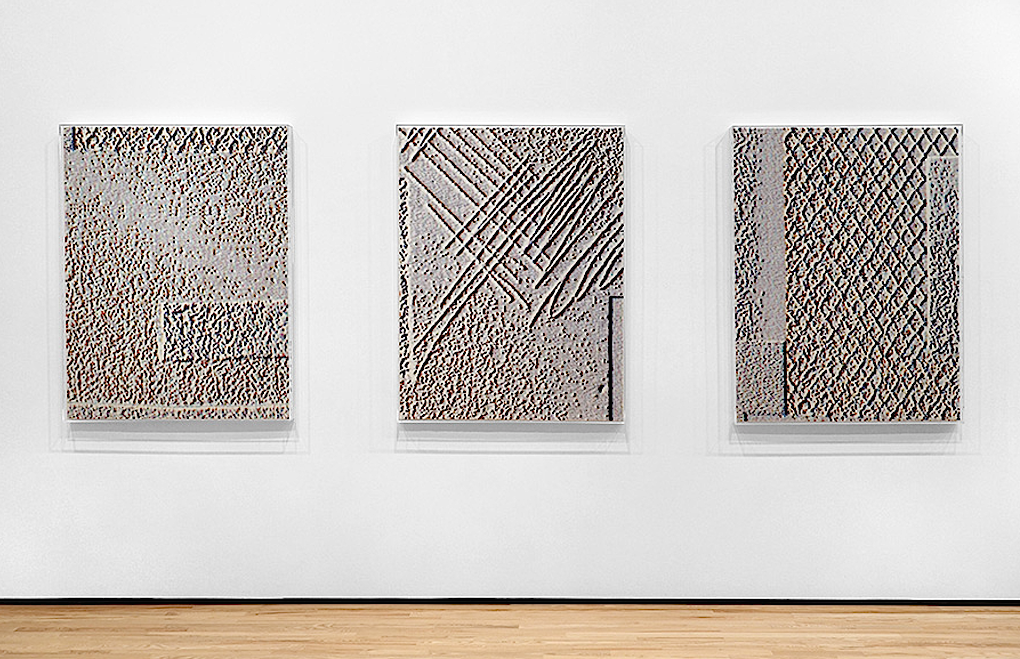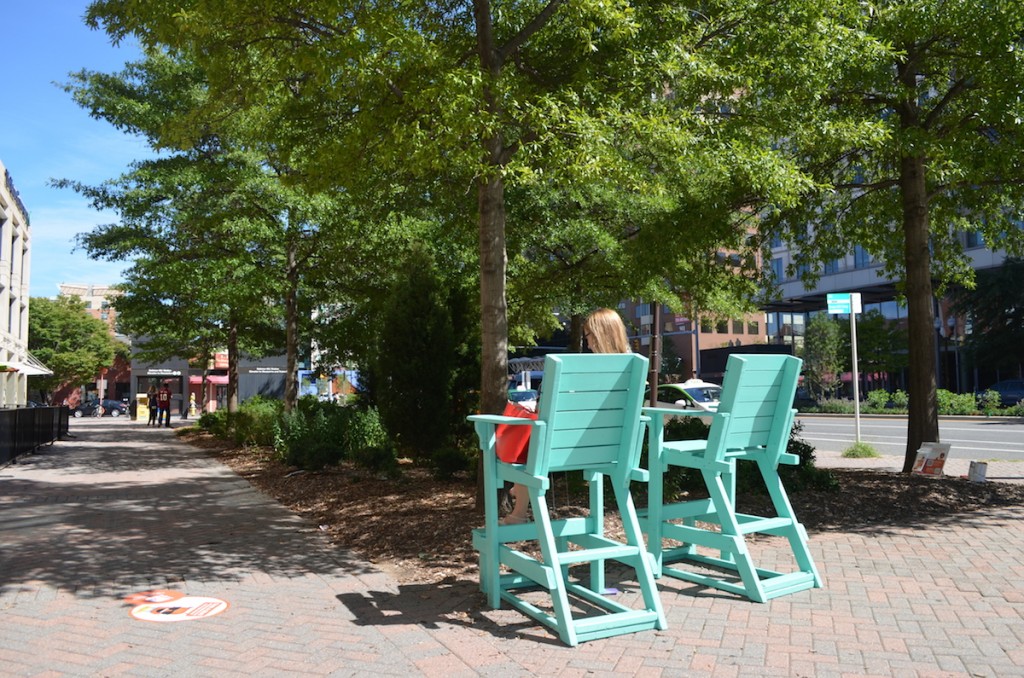Cara Ober interviews Patrick McDonough about his newest public art project, titled BEACHFRONT POTENTIAL
Patrick McDonough is an artist and educator living and working in Washington DC. His work has been shown in numerous solo, group and public exhibitions at institutions such as Socrates Sculpture Park, MASS MoCA, the Hyde Park Art Center, G Fine Art, and in collaboration with such institutions as the DC Commission on Arts and Humanities, Maryland Institute College of Art and ARCH Development Corporation. Recent project highlights include his debut solo museum exhibition, ‘brightveridiansentinelevents’ at the American University Art Museum, and public space initiatives in Miami, FL (The Sun and Shade Project) and Brentwood, MD (Catalog Brewing, in collaboration with Kenny George).
Cara Ober: Can you tell me more about BEACHFRONT POTENTIAL? What does the project entail and how did it develop?
Patrick McDonough: BEACHFRONT POTENTIAL is a public space intervention that juxtaposes vernacular beach culture with implications of sea level rise. It consists of three sets of lifeguard-styled beach chairs placed along a hypothetical future shoreline in Ballston, VA. Visitors to each set of chairs are able to access custom content on their mobile devices, from pedagogical articles to video to a stone skipping web game.
The project developed through a response to the Public Displays of Innovation public art initiative launched by the Ballston BID this year. I have been developing a couple of ideas using various visualizations of how and where the beach will be, including building an actual beach house where the beach will be, and it just so happened that a particular map had a future beach running right through Ballston!
CO: What I find most interesting about this project is the way simple objects (2 deck chairs right?) are used to convey huge and important ideas. Everyone has patio furniture and lots of people sit on the beach on beach chairs, but, in your project, sitting on these chairs is art and an experience of environmental awareness.
To me, it’s indicative of the power of conceptual art in today’s world and the option to use anything, any object you want, to engage with an audience. It’s so simple, yet effective! What are your opinions on the readymade and conceptual art and how do you define your practice in relation to this art historical baggage? Also, explain why you want to engage with an audience physically.
PM: I completely agree with you that art and artists, when implemented correctly, can be a disruptive and dynamic force in contemporary public culture. I seem to be drawn especially to gestures that inject dark comedy and strangeness into vernacular forms and the daily lived experience. As you say, the very placement of a set of lifeguard chairs instinctively evokes the beach landscape, even if you happen to be staring straight at Ted’s Montana Grill.
It’s funny, but I don’t really define myself in relationship to any art historical weights or baggage. The way I tend to think about it is more based on precedent-once established it is there to be built on. I am more intrigued by how what I am doing relates to the present in other fields than a hermetic discussion of lineage. Sometimes I worry that contemporary art is too tied to these lines of development, too focused on the past rather than the future.
CO: What is the significance of the Ballston neighborhood for you? Or is this just the place where the line would be?
PM: While the project’s physical location is certainly in large part determined by the line of sea level rise from my chosen online visualization, I think there are a number of constituent elements that make Ballston an excellent location for BEACHFRONT POTENTIAL. The neighborhood is positioning itself as a nexus of innovation, an attitude that we will need in spades when tackling these huge ideas. Plus the Nature Conservancy has a big office there.
But, I think at a lived experience level, the cognitive dissonance that happens when these Art Deco colored chairs are dropped down into the sidewalks and green spaces is really effective. It seems so absurd that it becomes plausible, or at least offers the question even if the beach doesn’t quite get to Ballston, where does its movement stop?
CO: Besides sitting in the chairs, participants have the option to access all different types of information. How is the data acquired?
PM: The digital content that we have crafted is tied directly to each chair set’s location through geo-location interfaces that read where a visitor’s phone is located. We made the interface really lightweight though, to smooth the experience as much as possible. The content is pushed out entirely through a web browser, rather than requiring a series of downloads and click throughs.
CO: How do you make this kind of info accessible to those without smart phones, etc.? Also, is there a way to entice your audience to accept this information – especially if it is someone who does not believe in climate change?
PM: It was important to me that individuals need to go to the chairs to access this content, as a way to physically link them to this potential beach. Having to go to the actual locations makes visitors physically implicated in the environmental flux we are experiencing. Plus the fact that these are lifeguard chairs is important too.
Lifeguards keep watch, protect, take action as necessary. By asking that audiences in effect take on this role by sitting in the chairs applies those characteristics to them as well, what do you see? What will you do? Your question about the digital divide is a good one, and for this particular iteration, the site specific content is only accessible on mobile devices that are robust enough to handle the web app, video, and game content. And while this absolutely leaves certain individuals out of the mix, at a point you are always leaving someone out. Plus it seems to me that smart mobile devices might be one the most accessible delivery points at our disposal- isn’t a phone the gateway device in 2014?
In regards to getting this information accepted, I think my job is to present content in new and different ways than a scientific journal or the New York Times or Brian Williams, which hopefully allows people with all sorts of points of view to think about these ideas or be challenged by them. I have spoken with scientists who have mentioned to me that doom and gloom scenarios are off putting and can cause people to shut down and turn their ears off.
But everybody loves the beach, so why don’t we try talking about it that way? Your favorite beach is not going to be where it is now. We might not know right where it is going to end up, but it is moving.I always come back to the loose definition of sustainability: the balancing of the needs of the present with those of the future. That’s what I hope to foreground in all of this, what do we think the future is going to be, and how should we behave accordingly?









